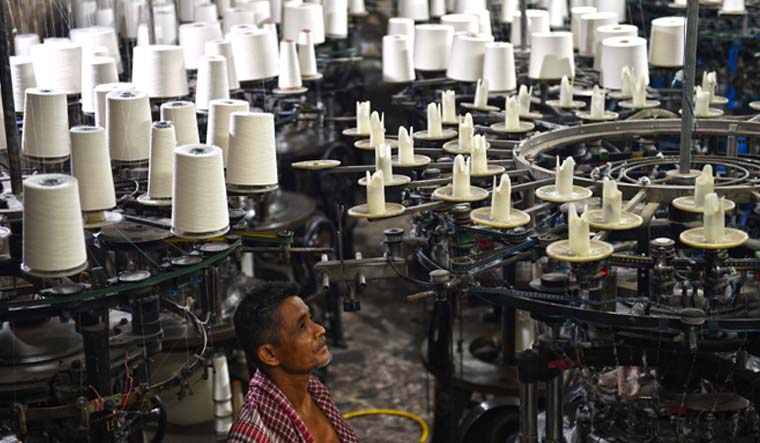The Union cabinet approved a production-linked incentive (PLI) scheme for the textiles sector with a budgetary outlay of Rs. 10,683 crore.
The PLI scheme for textiles is part of the overall announcement of PLI schemes for 13 sectors made earlier during the Union budget 2021-22, with an outlay of Rs. 1.97 lakh crore. With the announcement of PLI schemes for 13 sectors, minimum production in India is expected to be around Rs. 37.5 lakh crore over 5 years and minimum expected employment over 5 years is nearly 1 crore, the government said.
According to the cabinet statement, the PLI scheme for textiles will promote production of high-value man-made fibre (MMF) fabric, garments and technical textiles in the country. “The incentive structure has been so formulated that industry will be encouraged to invest in fresh capacities in these segments. This will give a major push to growing high-value MMF segment, which will complement the efforts of cotton and other natural fibre-based textiles industry in generating new opportunities for employment and trade, resultantly helping India regain its historical dominant status in global textiles trade,” the cabinet release said.
The technical textiles segment is a new-age textile, whose application in several sectors of economy—including infrastructure, water, health and hygiene, defence, security, automobiles and aviation—will improve the efficiencies in those sectors of economy. Government had also launched a National Technical Textiles Mission in the past for promoting R&D efforts in that sector. PLI scheme will help further in attracting investment in this segment.
There are two types of investment possible with different set of incentive structures. Any person (which includes firm/company) willing to invest minimum Rs 300 crore in plant, machinery, equipment and civil works (excluding land and administrative building cost) to produce products of notified lines (MMF fabrics, garment) and products of technical textiles shall be eligible to apply for participation in first part of the scheme.
also read
- IMF raises India's growth projection to 6.8 pc; growth in China likely to slow to 4.6 pc
- Double economy, exports: PM Modi's growth plan for probable 3rd term
- Corporate credit rating upgrades continue to outweigh downgrades
- Here's how Germany surpassed Japan as third largest economy despite shrinking GDP
In the second part, any person (which includes firm/company) willing to invest minimum Rs 100 crore shall be eligible to apply for participation in this part of the scheme. In addition, priority will be given for investment in aspirational districts, tier-3, tier-4 towns and rural areas and due to this priority, industry will be incentivised to move to backward areas. This scheme will positively impact states like Gujarat, Uttar Pradesh, Maharashtra, Tamil Nadu, Punjab, Andhra Pradesh, Telangana and Odisha.
According to the government estimates, over a period of five years, the PLI scheme for textiles will lead to fresh investment of more than Rs 19,000 crore, cumulative turnover of over Rs.3 lakh crore will be achieved under this scheme and this will create additional employment opportunities of more than 7.5 lakh jobs in this sector and several lakhs more for supporting activities. The textiles industry predominantly employs women; therefore, the scheme will empower women and increase their participation in formal economy.





